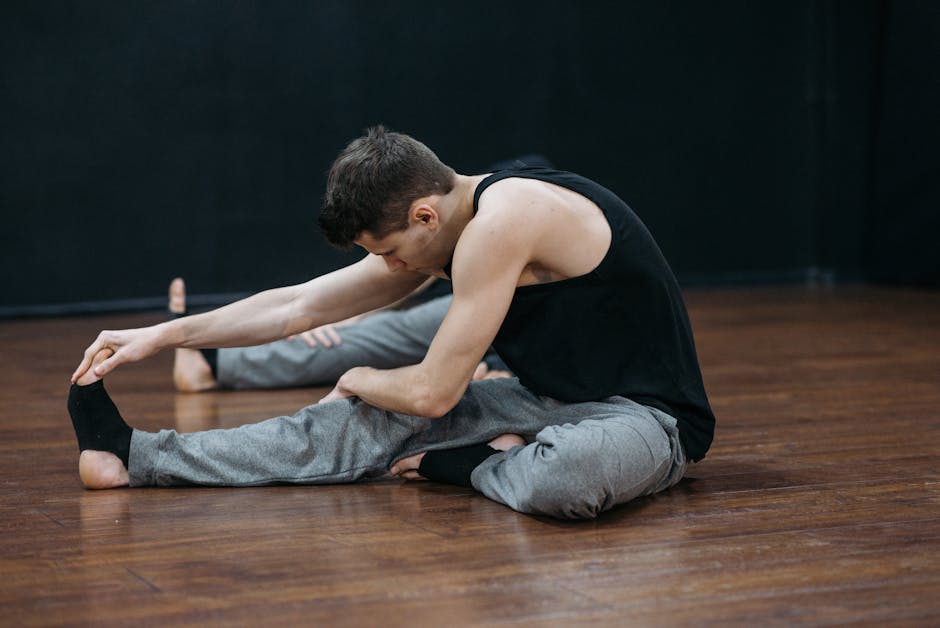Title: Unlock Flexibility: 3 Subtle Indicators You Should Stretch Your Hamstrings
Introduction:
Have you ever wondered if your hamstrings are crying out for a good stretch? Sometimes, the signs aren’t as obvious as a pulled muscle or a cramp. In this comprehensive guide, we’ll dive into the world of hamstring health and uncover three subtle indicators that it’s time to give these crucial muscles some TLC. So, let’s limber up and explore expert advice on why and how to keep your hamstrings in top-notch condition!
3 Subtle Indicators You Should Stretch Your Hamstrings, Expert Advice
https://webie.sadewa.my.id/wp-content/uploads/2024/03/f99ddda7cc74370778d72891f6a6f564.png” alt=”3 Subtle Indicators You Should Stretch Your Hamstrings, Expert Advice” />
Indicator One: Reduced Mobility and Flexibility
Have you noticed a decrease in your ability to touch your toes or perform a deep squat? This could be a whisper from your hamstrings suggesting they need a stretch. Tight hamstrings can significantly limit your range of motion, which, in turn, affects your daily activities and overall athletic performance.
Understanding the Link Between Hamstring Health and Mobility
Your hamstrings play a pivotal role in many movements. When they’re tight, they can pull on your pelvis and cause a chain reaction, leading to lower back pain and reduced hip mobility. It’s a subtle domino effect that can disrupt your body’s harmony.
Expert Tips for Enhancing Flexibility
Incorporating dynamic stretches before workouts and static stretches afterward can work wonders. Yoga poses like the downward dog and forward fold are also fantastic for lengthening those hamstring fibers. Remember, consistency is key!
Indicator Two: Posture Problems
Ever caught your reflection and noticed a slight slouch or a forward tilt of the pelvis? These posture problems can be subtle indicators that your hamstrings are too tight. They’re often overlooked, but they can lead to a world of discomfort if not addressed.
How Tight Hamstrings Affect Your Posture
Tight hamstrings can tilt your pelvis backward, flattening the natural curve of your lower back. This can lead to a condition known as ‘posterior pelvic tilt,’ which can strain your back muscles and contribute to a slouching posture.
Posture-Correcting Stretching Routines
To combat this, try stretches that target both your hamstrings and your hip flexors. The pigeon pose and the standing hamstring stretch are excellent choices. By stretching regularly, you can help realign your posture and stand tall.
Indicator Three: Persistent Lower Back Discomfort
If you’re experiencing that nagging lower back pain, it might not be just an uncomfortable office chair or an old mattress. It could be a sign that your hamstrings need some attention.
Deciphering the Connection Between Back Pain and Hamstrings
Tight hamstrings can create an imbalance in your body, pulling on the lower back and increasing the stress on the spine. This can lead to discomfort that ranges from mild to debilitating.
Alleviating Back Pain with Targeted Stretches
To alleviate this discomfort, focus on stretches that gently elongate the hamstrings without straining the back. The seated hamstring stretch is a safe bet, and using a stretch strap can help maintain proper form.
Expert Advice on Hamstring Stretching Techniques
Stretching your hamstrings isn’t just about going through the motions. It’s about technique, timing, and frequency. Let’s break down the expert advice on how to stretch effectively.
The Right Way to Stretch: Technique Matters
Proper technique is crucial to prevent injury and ensure that the stretch is effective. Keep your spine neutral, move into stretches slowly, and hold them for at least 30 seconds to allow the muscle fibers to relax.
When to Stretch: Timing Is Everything
The best time to stretch your hamstrings is when your muscles are warm. Post-exercise is ideal, but if you’re stretching on a non-workout day, a brief warm-up will do the trick.
Integrating Hamstring Stretches into Your Daily Routine
Making hamstring stretches a part of your daily life can have profound effects on your flexibility, posture, and overall well-being. Here’s how to seamlessly add them to your routine.
Creating a Stretching Schedule That Works for You
Find times that work best for your schedule, whether it’s in the morning to kickstart your day or in the evening to wind down. The key is to make it a habit, just like brushing your teeth.
Stretches for Every Setting: At Home, Work, or On the Go
You don’t need a gym or special equipment to stretch your hamstrings. Simple stretches can be done anywhere, from the office chair to the park bench. Get creative and make the world your stretching zone!
Conclusion:
In the hustle and bustle of daily life, it’s easy to overlook the subtle signs our bodies send us. But when it comes to hamstring health, it’s crucial to tune in. Remember the three subtle indicators: reduced mobility, posture problems, and persistent lower back discomfort. By incorporating expert advice on stretching techniques and making it a part of your daily routine, you’ll unlock a new level of flexibility and say goodbye to unnecessary discomfort. So, what are you waiting for? It’s time to stretch those hamstrings and leap towards a more limber you!
